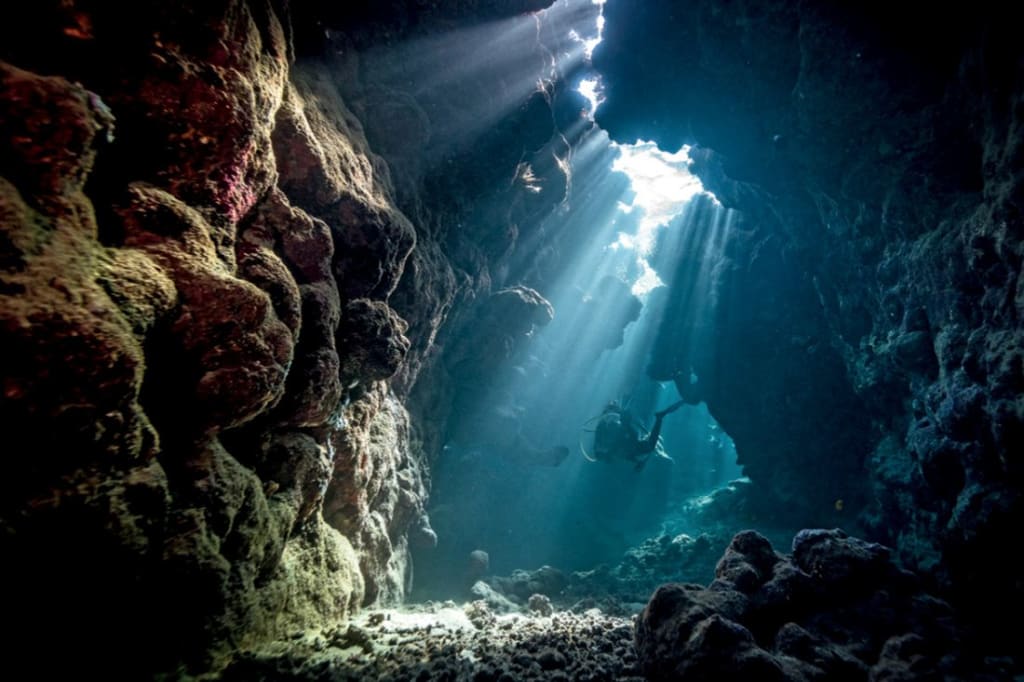Exploring the Mysteries of the Abyss
The Astonishing World of Deep Sea Gigantism

Humans often consider themselves the dominant species on Earth, but our reign is limited to a tiny fraction of habitable locations. While we have settled in various extreme environments, the truth remains that over 99% of habitable space exists beneath the Earth's oceans. The ocean depths, largely unexplored and uncolonized, hold a fascinating realm of mystery and wonders. In this article, we will delve into the world of deep sea gigantism, where familiar creatures take on colossal proportions, and seek to understand the factors that contribute to this extraordinary phenomenon.
The Immensity of the Deep Ocean:
To comprehend the vastness of the ocean depths, one must grasp its dimensions. With over a billion cubic kilometers of water in the world's oceans, the Mariana Trench, the deepest point on Earth, plunges an astonishing 6.8 miles beneath the surface. Comparatively, the world's tallest building, the Burj Khalifa, could be stacked thirteen times upon itself and still not reach the surface of the Pacific Ocean above. This scale highlights the enormity of the underwater world and the unique conditions it presents.
The Intriguing Deep-Sea Creatures:
The ocean depths harbor an incredibly diverse array of creatures, many of which exhibit unusual and often gigantic proportions. While familiar animals like whales and sharks inhabit the upper layers of the ocean, venturing deeper reveals a whole new realm of bizarre and captivating life forms. The goblin shark, with its extendable jaws, lurks at 400 meters, while the blobfish, renowned for its unattractive appearance, awaits at around 1,000 meters. As we venture further into the depths, creatures like the ghastly gulper eel, with its exaggerated mouth, capture our attention.
Deep Sea Gigantism:
One of the most fascinating aspects of the deep-sea ecosystem is the occurrence of deep sea gigantism. Many species that inhabit these dark depths grow significantly larger than their shallow-water counterparts. The iconic giant squid, measuring up to 13 meters in length and weighing over 250 kilograms, is a prime example. However, even more colossal is its sibling, the colossal squid, weighing up to three times more and featuring eyes the size of basketballs. The trend of gigantism extends to other creatures such as the giant isopod, which can reach half a meter in length and nearly 2 kilograms in weight, defying expectations based on their shallower counterparts.
Unraveling the Mysteries:
The reasons behind deep sea gigantism are not yet fully understood due to the challenges of exploring and studying the remote ocean depths. However, researchers have proposed intriguing theories. One theory suggests that food scarcity plays a significant role. Unlike other ecosystems, the deep sea has minimal food production due to the absence of light for photosynthesis. Instead, marine snow, a mixture of decaying organisms and fecal matter, descends from the surface to provide sustenance. Scarcity and unpredictability of food create a selective pressure for larger individuals that can cover greater distances and store more energy, increasing their chances of survival.
Temperature and Predation:
Temperature is another factor influencing deep-sea gigantism. The frigid conditions of the deep sea decrease metabolic processes, reducing the food and oxygen requirements for sustaining life. Slower growth rates and longer lifespans are observed in many deep-sea species. Similarly, the relative absence of predators in the deep sea allows for larger body sizes as a defensive strategy.
Conclusion:
The deep sea, with its unfathomable depths and colossal inhabitants, continues to astound and mystify us. Deep sea gigantism presents a captivating phenomenon that defies expectations.
While theories of food scarcity, temperature, and predator absence provide potential explanations, the complexity of this phenomenon suggests that multiple factors are at play. As we strive to unravel the secrets of the ocean depths, we gain a deeper understanding of how life adapts and thrives in the harshest environments on our planet.
About the Creator
Enjoyed the story? Support the Creator.
Subscribe for free to receive all their stories in your feed. You could also pledge your support or give them a one-off tip, letting them know you appreciate their work.





Comments
There are no comments for this story
Be the first to respond and start the conversation.